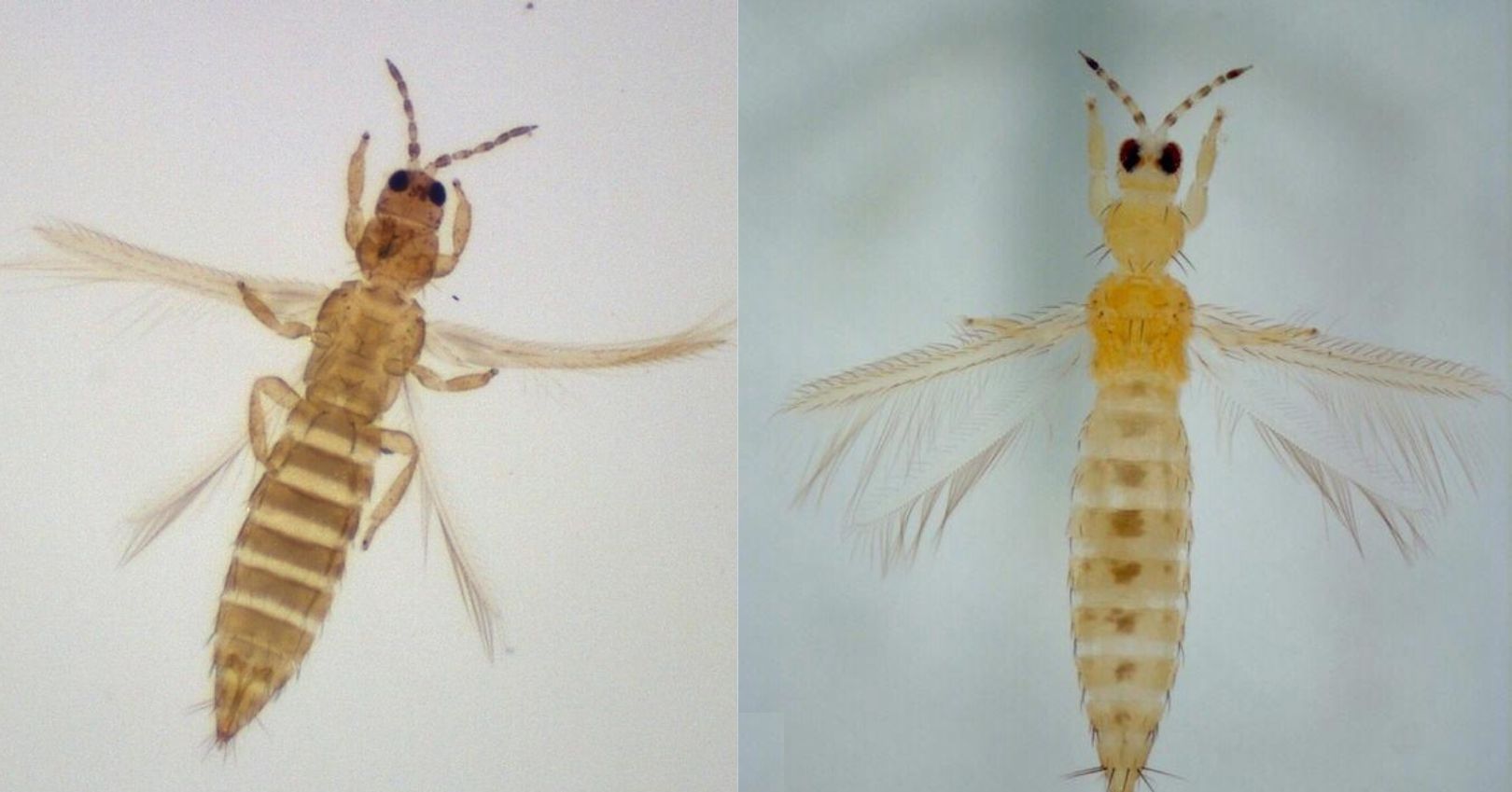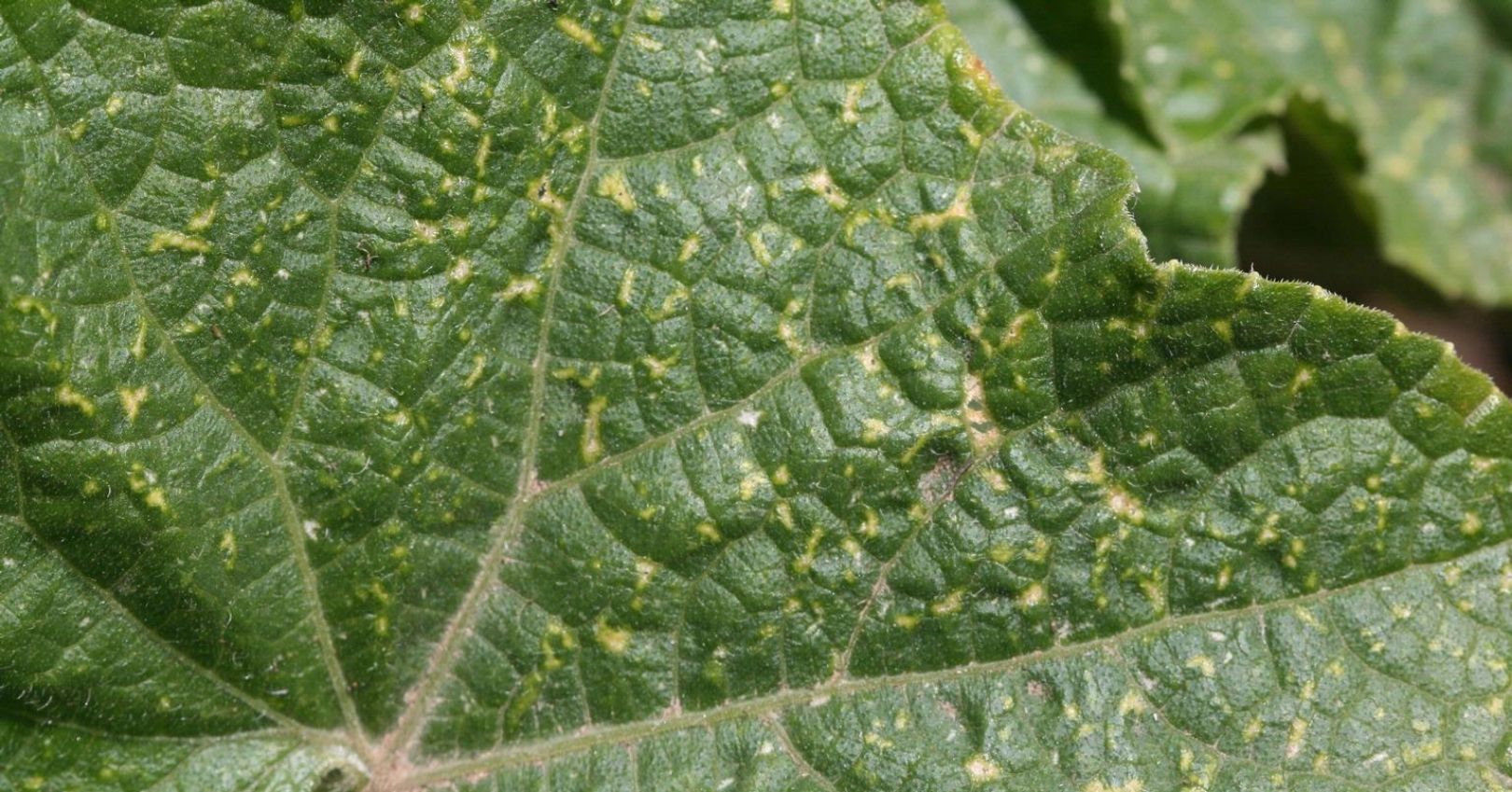Thrips


Thrips will feed on leaves, developing buds, flowers, and fruits of melons, and if populations are high, can cause economic loss. Typical symptoms are “rasping” and stippling injury on leaves, and stunted buds, flowers, and fruits. Thrips feeding on the surface of well-developed fruits can cause scarring. An abundance of dark tar-spots of thrips frass can contaminate
Damage
Damage occurs as young and adult thrips feed on flower and shoot tips during the early growth stages, and if populations are high, they may feed on immature fruit. Feeding damage results in a silvering on leaves and sometimes deformed leaves that curl downward.
Monitoring
Use yellow or blue sticky traps in susceptible fields from seedling through flowering to determine the magnitude of the thrips population.
Management
Cultural
- Disk in weeds before they flower. This can lessen the attraction of thrips to the field. However, disking weeds after they have flowered (once thrips are present) can cause thrips to move into crop plants
Chemical
Before deciding to treat for thrips, be sure to verify that the damage is thrips-related. Unnecessary treatments can cause spider mite buildup, so it is important to only consider treatment if the thrips population is causing serious damage to shoot tips, flowers, or fruit.

